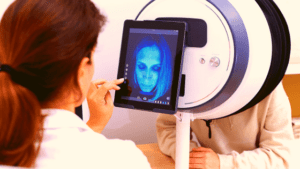As expected, healthcare professionals will find major cardiology coding differences to new and established outpatient and office E/M codes 99202-99215. Obviously, healthcare practices must be well prepared to adopt these changes without flaws. These changes and modifications aims for simpler, feasible and flexible cardiology coding and documentation that focuses on burden free administrative system.
Related Services : Cardiology billing Services
Cardiology coding changes 99202-99215 is proposed by The Center for Medicare and Medicaid Services. It also includes Evaluation and Management modifications such as:
- Elimination of history and physical exam for code selection.
- Enabling healthcare professionals to select perfect and best patient care with code level selection based on MDM-medical decision making.
- Promotes payer’s consistency by adding additional details or information to CPT code descriptors and guidelines.
Let’s learn the impact of these E/M changes on cardiology coding practices.
Analyzing Cardiology coding changes to flatten 99202-99215:
- At present three key components are used for new and established patient’s office and outpatient codes 99202-99215. These components involve history, examination, medical decision making and selecting appropriate E/M service level.
- From the year 2021, CPT eliminates key components history and examination for leveling 99202-99215.
- Instead, healthcare professionals will need to base cardiology coding selection on medical decision making or total time spent by healthcare professionals with patients on the date of service.
- In addition to this, CPT will also update guidelines in regards to time and MDM.
- Over all E/M changes in cardiology coding will be applicable to very specific codes. They include new and established office and outpatient E/M codes 99202-99215.
- For instance, if the cardiologist consults patients in hospital or nursing facility or in the office, only the office visits would be considered in the new guidelines. Codes from other E/M services are not allowed to use new 2021 guidelines.
A Glance at New Code Descriptors:
-
Descriptor in 2020:
99203- Office or other outpatient visit for the evaluation and management of a new patient includes these 3 key components: a detailed history; a detailed examination; medical decision making of low complexity.
-
Revised Descriptor in 2021:
99203- Office or other outpatient visit for the evaluation and management of a new patient that includes a medically appropriate history or examination and low level of medical decision making. While using time for code selection, mention 30-44 minutes of total time is spent on the date of the encounter.
- The revised descriptor 99203 clearly explains, if healthcare professionals are ready to level services based on medical decision making, 99203 would require a very low level of MDM.
- In order to use total time, the healthcare professional must mention and spend almost 30-44 minutes of time with patient on the date of service and encounter. Beyond these, a proper medical history or examination is required.
- Though healthcare professionals don’t decide to level codes 99202-99215 based on history or examination, it won’t decrease the significance of the above key components.
- Healthcare professionals must concentrate on history and examination even if they don’t use those components for leveling, as they remain very essential for medical records.
A Makeover with Time in 2021:
- In cardiology coding 2021, CPT has decided to redefine time as the total time spent on the day of service rather than including just time of face to face interaction.
- It moreover allows calculating pre time and post time as well as total time spent by physician and patient at the time of encounter or service for the codes 99202-99215.
- The total time between physicians and patients include certain activities. They are:
- Review of test results and preparing to consult patients.
- Review of separate patient history.
- Medically appropriate examination or evaluation
- Educating and counseling patient
- As mentioned in the above examples, the total time involves both face to face and interaction throughout the day.
- However both indicate the time spent on the date of service. CPT additionally will change the standard time set for all these codes.
- For instance, the range for 99202 includes 15 to 30 minutes and the range for 99212 is 10 to 20 minutes.
Cardiology coding Examples:
- An established patient consults office for follow up appointment for hypertension, and healthcare professional spends just five minutes of his time by having a look at last week’s lab report.
- Secondly, healthcare professional spends around nine minutes of time by reviewing appropriate medical history and also reviews current medications and schedules for another follow up after three months.
- The whole scenario is entered electronically in EHR during face to face interaction.
- The code used for the above encounter is 99212 by leveling service of this patient based on time. As the whole time involves above 10 minutes, it falls under the code 99212.
New MDM Guidelines:
- With no surprise, MDM guidelines will also be revised in this year.
- In order to qualify particular level of MDM, healthcare professionals must meet the key components or at least two of those elements.
- Medical decision making’s new criteria will be:
- The complexity and number of problems addressed during the visit.
- The amount of complexity of data or details to be reviewed and identified.
- The risk of complications, morbidity, and mortality of patient management.
Hope you got required information on Cardiology coding from this article. For suggestions, please shoot your comments below. Don’t forget to subscribe our YouTube channel for more videos on healthcare. Do follow us on Facebook, Twitter, LinkedIn and Instagram.




